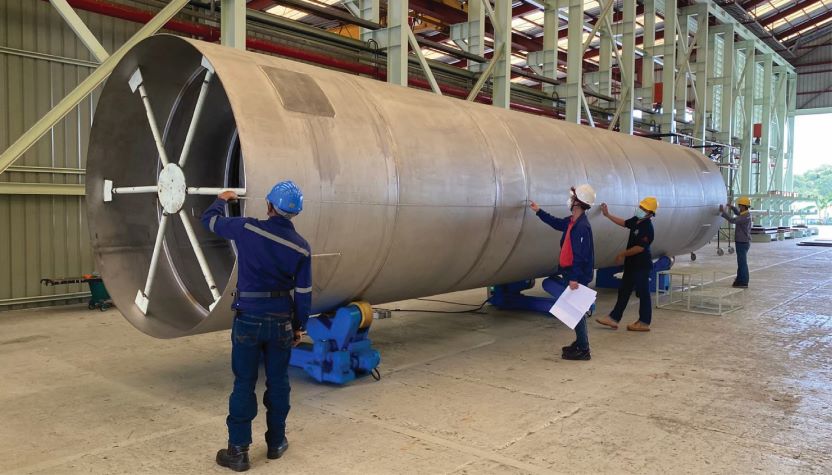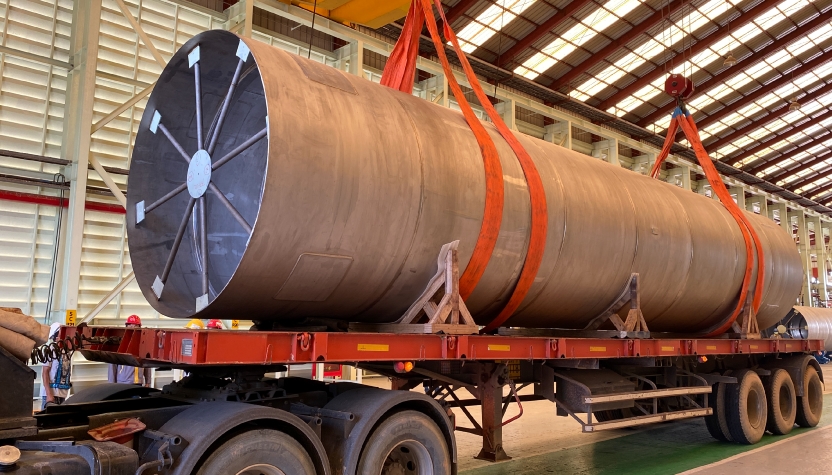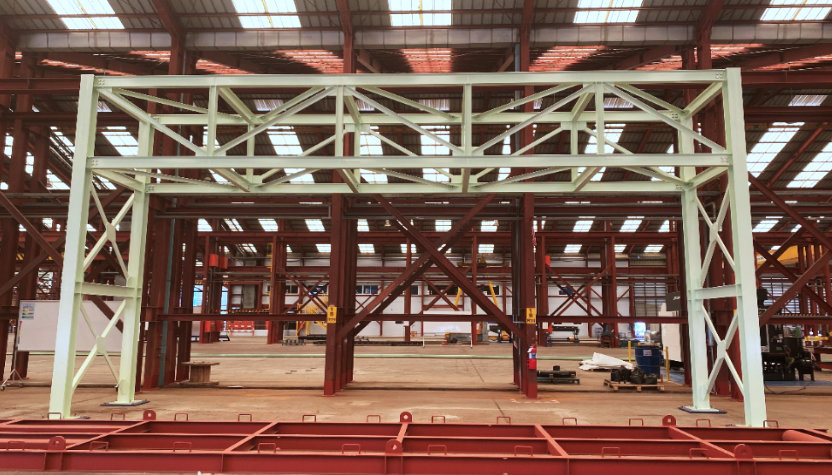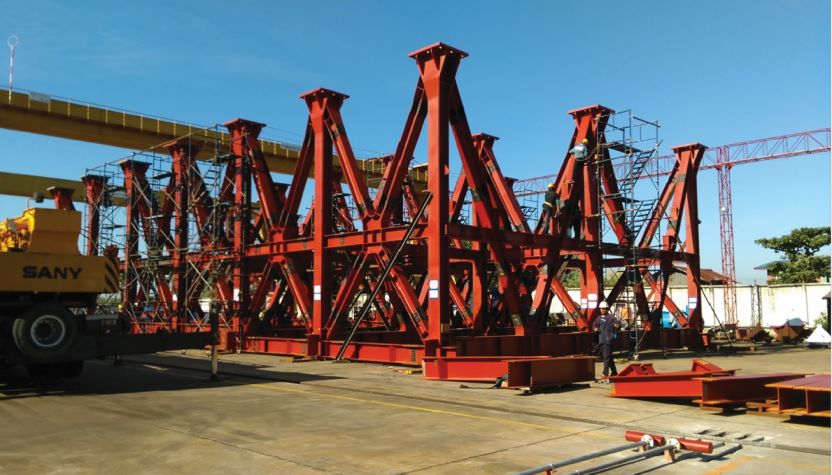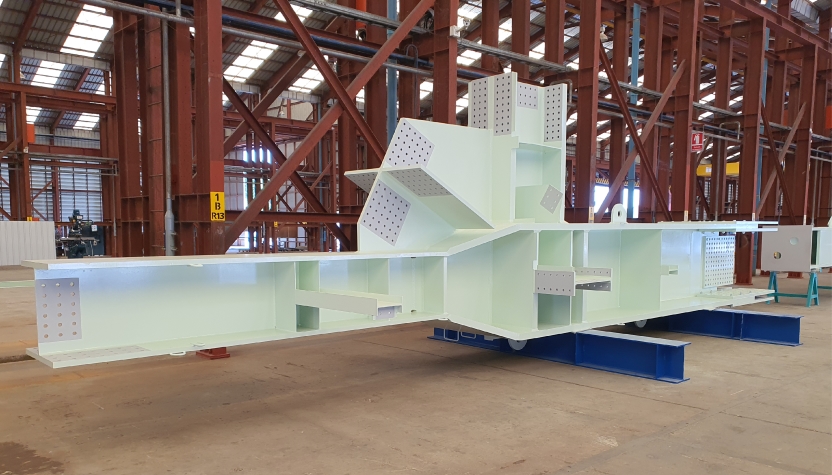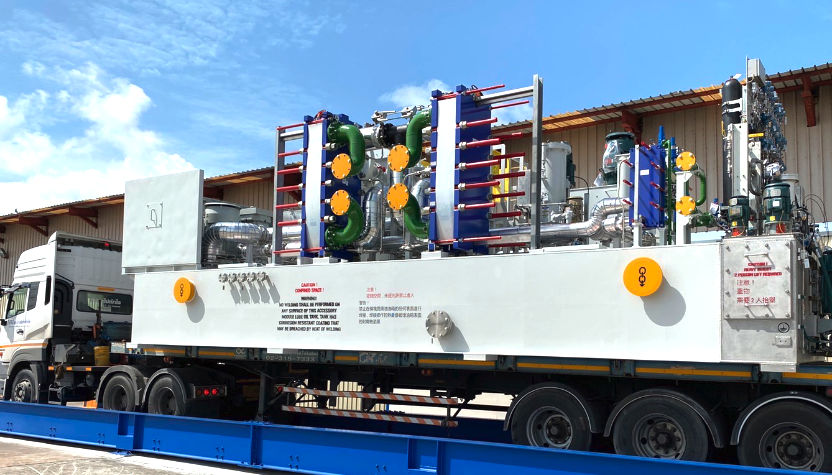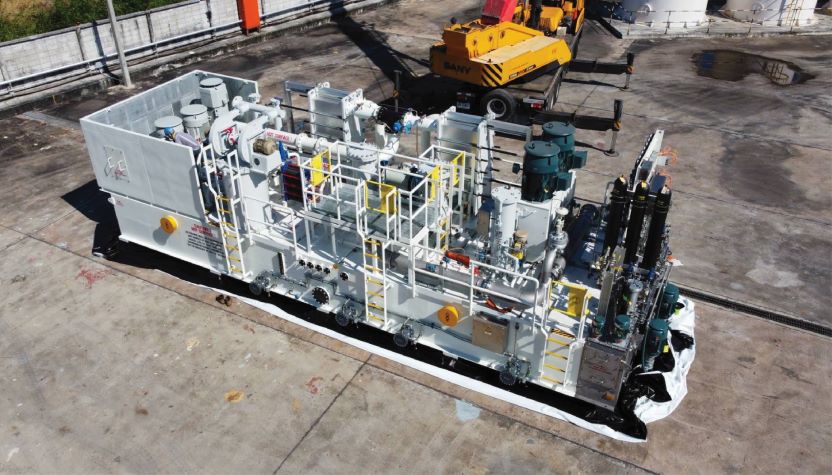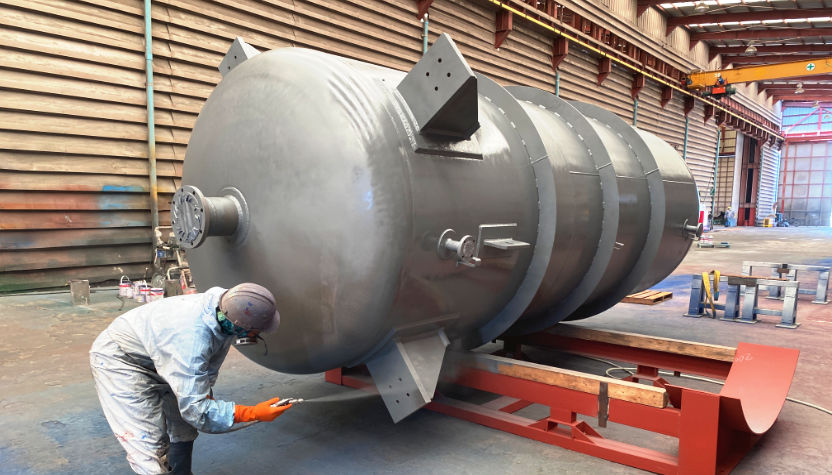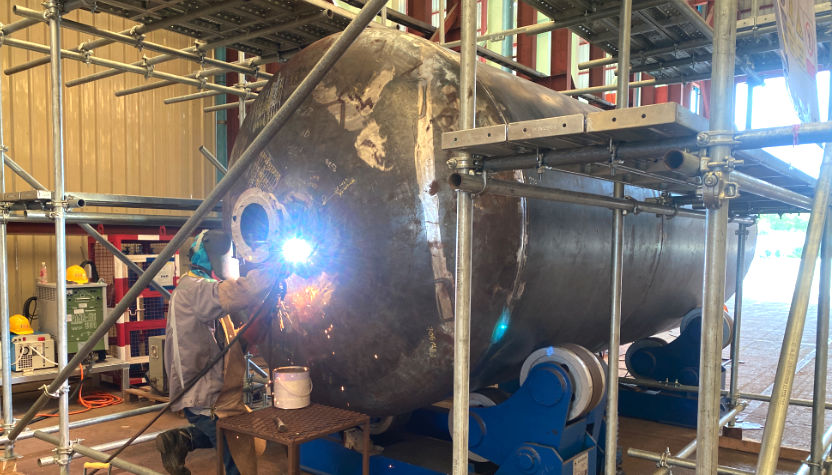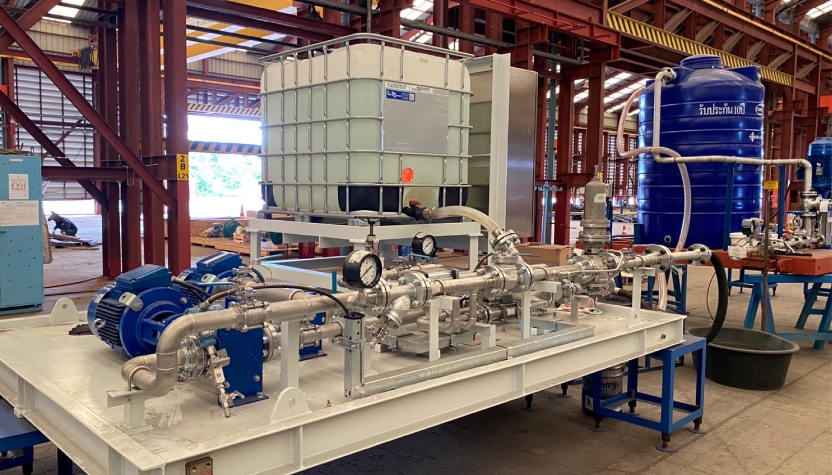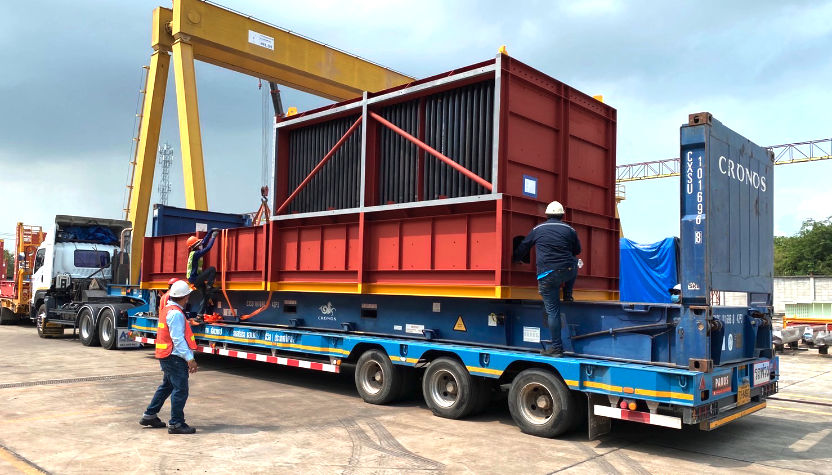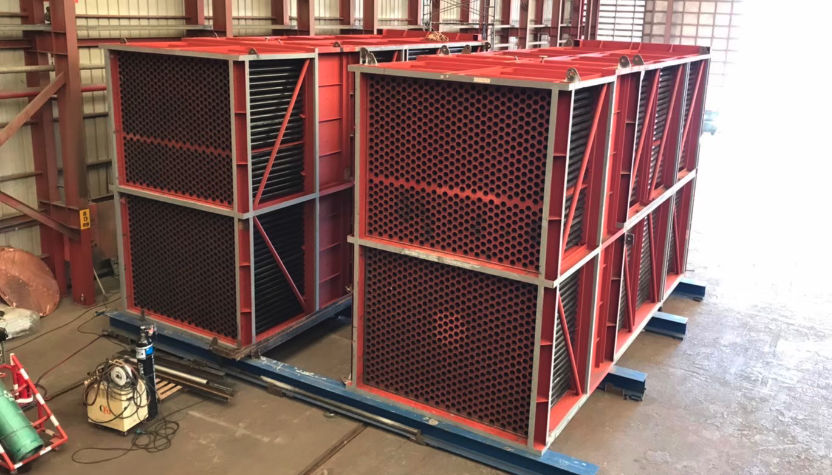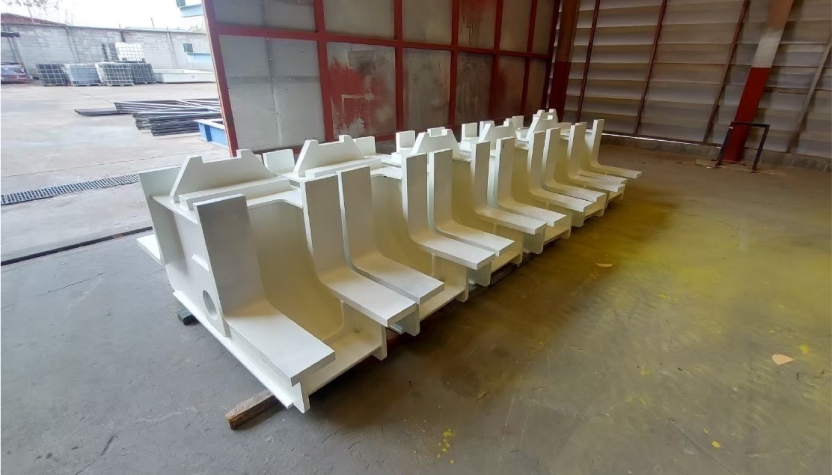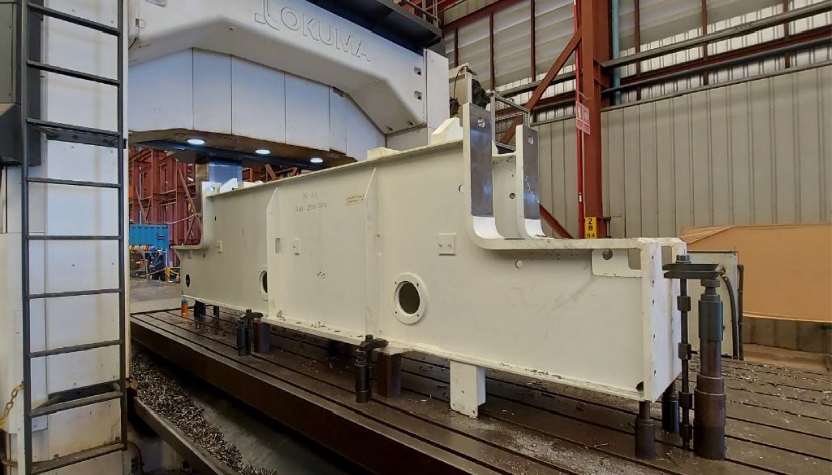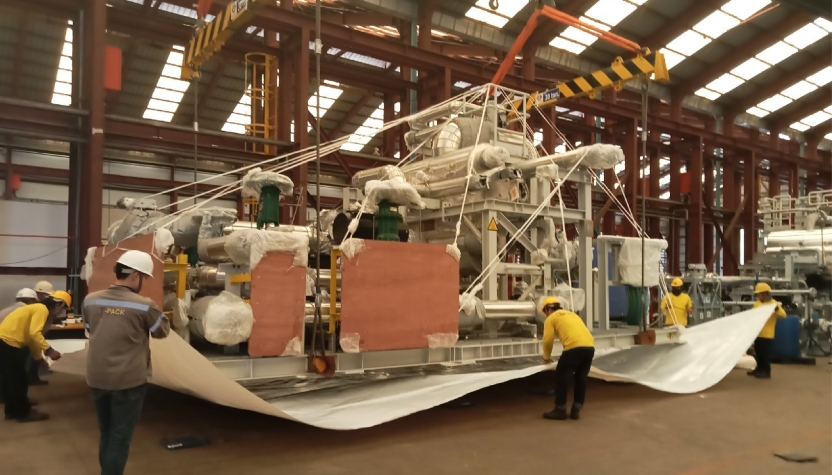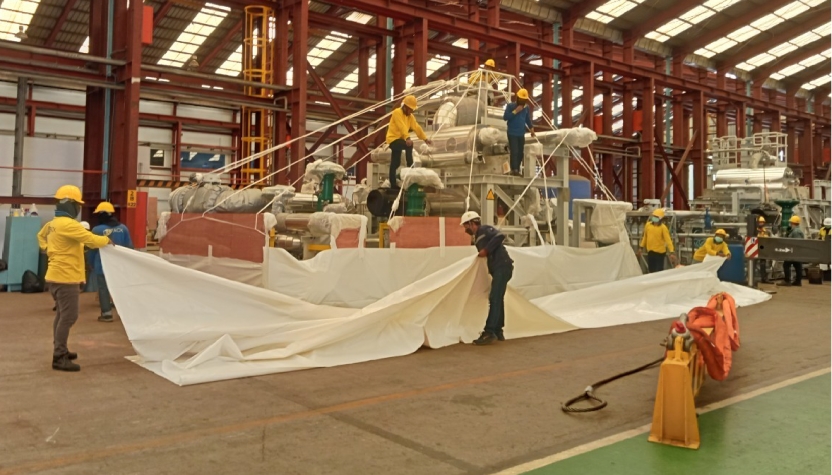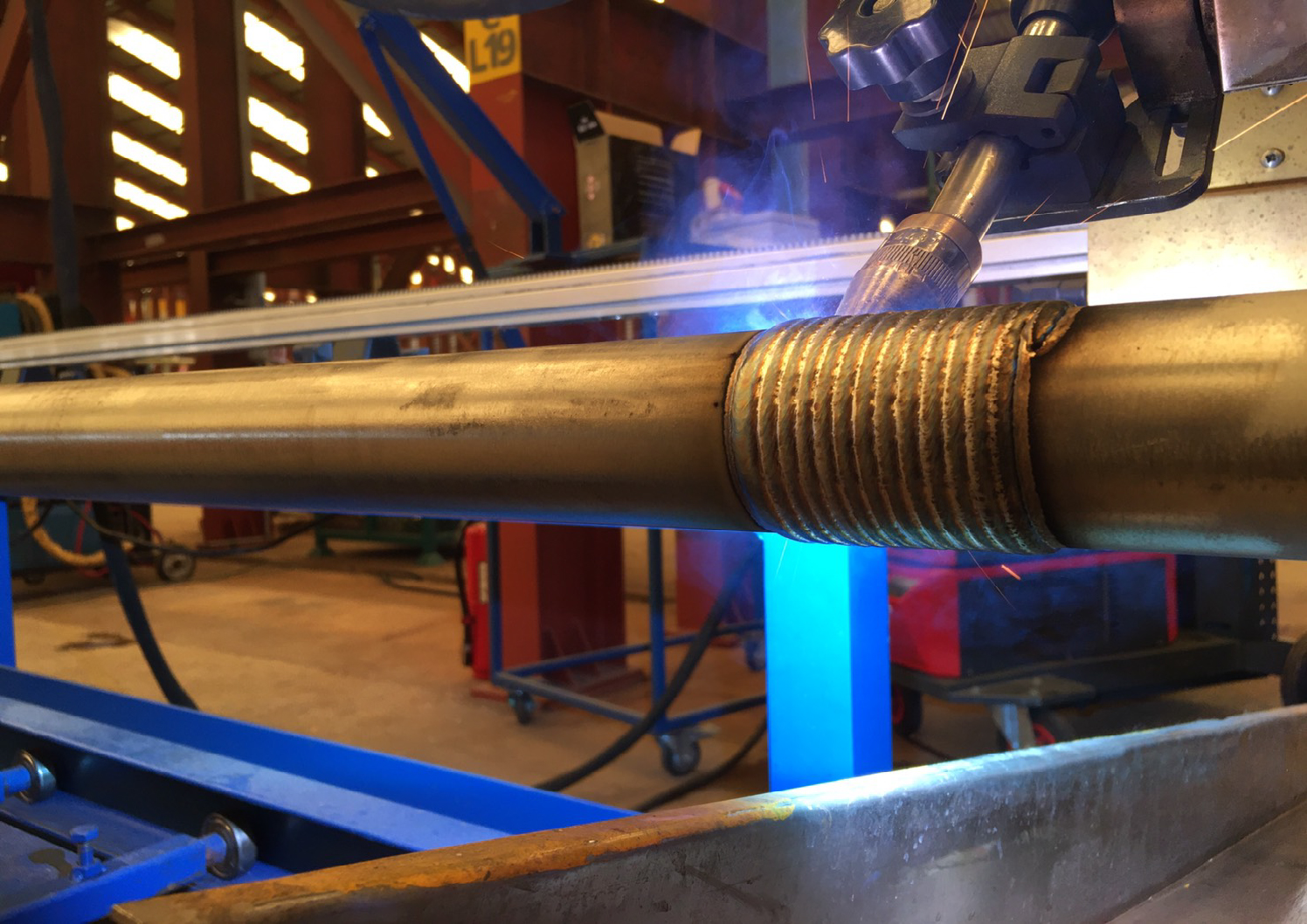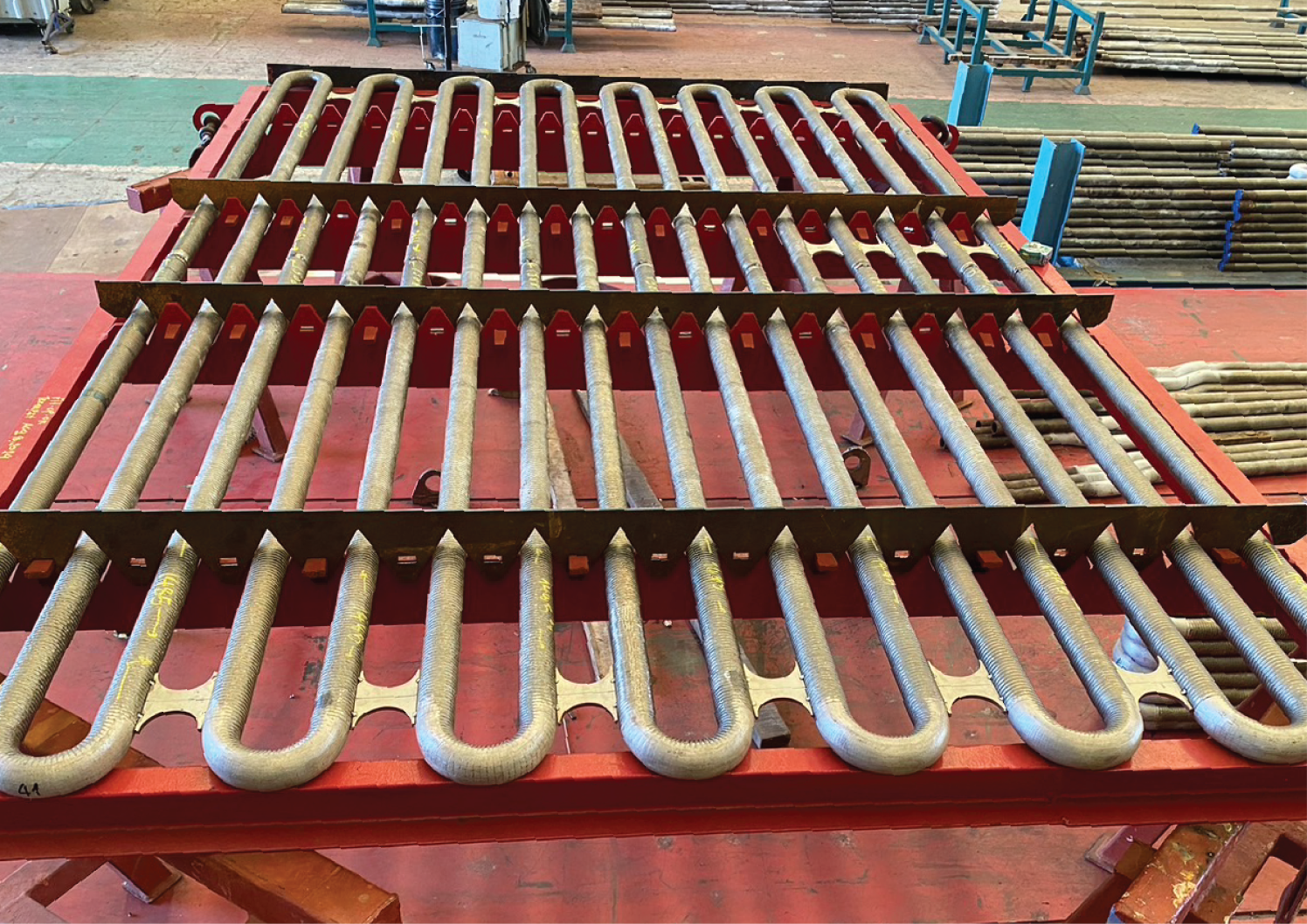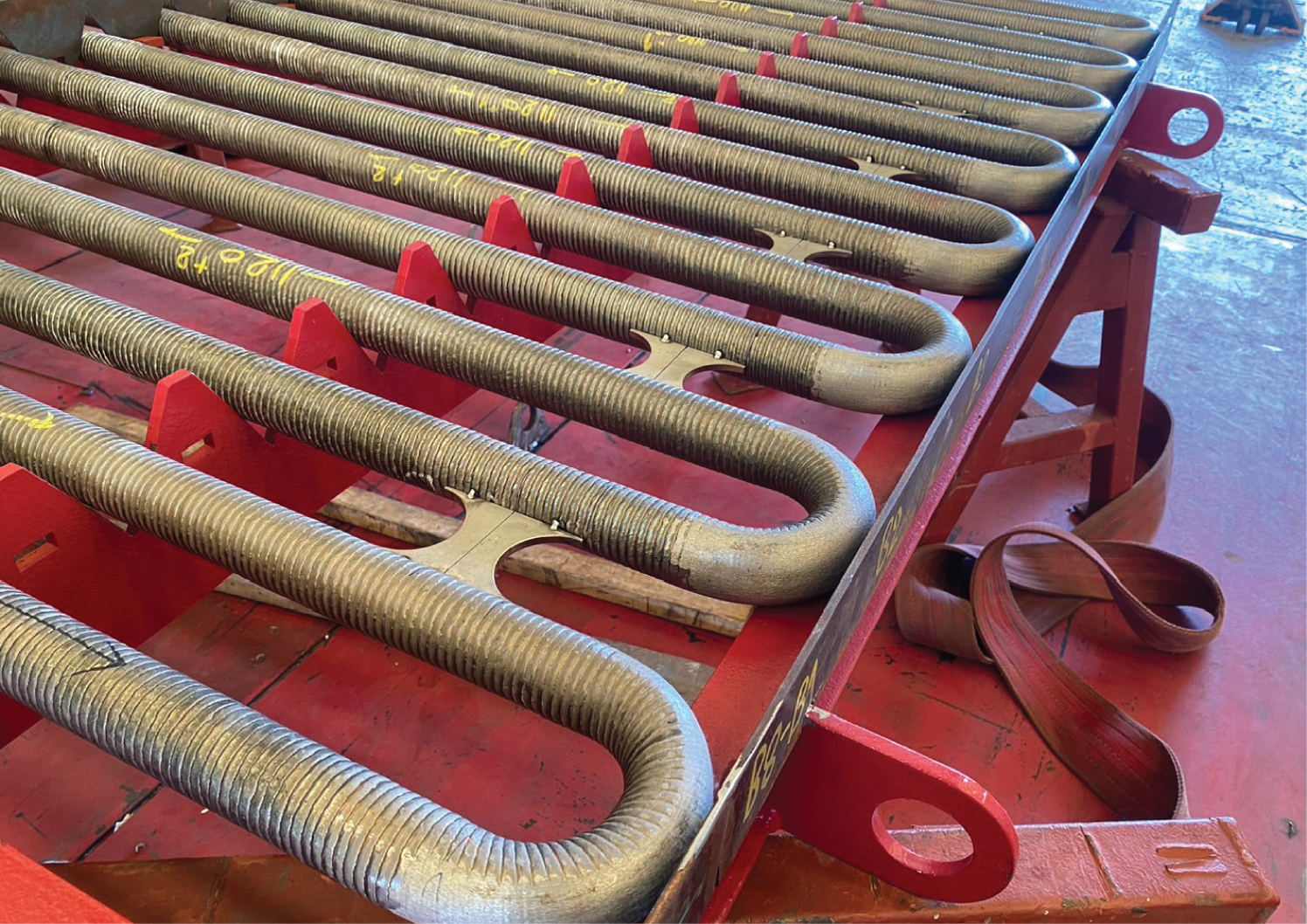- Pressure Vessel
- Tank
- Structure
- Plate Work
- Boiler
- Module
- Product of Power plant
- Crane Parts
- Machine work
- Packing
- Weld Overlay
A Pressure Vessel is a container for fluid, liquid, or gas. The container is designed as cylindrical with a dish head. The design of a pressure vessel depends on the fluid type, user’s usage, etc. The production and testing standard of pressure vessel manufacturing processes, such as Blow Down Tank, Detractor Tank, Steam header, Vessel Tank for filter, etc., always follows the law or international requirements by the United States called ASME Boiler and Pressure Vessel Code (BPVC).
The verified Pressure Vessel will get the U-Stamp at a higher price than pressure vessels without the U-Stamp.
The U-Stamp Vessel certification must be a third-party agency representing the manufacturer and ASME called AI (Authorized Inspector). The cost of U-Stamp stamping depends on the type of container or the user’s requirements. Following the ASME Boiler and Pressure Vessel Code (BPVC) standards, we can produce Pressure Vessels.
With or without a U-Stamp, we always work on designing and calculating by the Compress program referring to ASME standards. In addition, it can refer to the user’s standards to make it consistent and the customers’ needs as well.
* Remarks: Sourcing equipment for electrical systems or systems other than assembly work is on the customer or can be discussed later.
Tank
A cylindrical tank with a flat base is the shape of a tank. It comes in various sizes ranging from a diameter of 1 meter to a large tank, depending on usage and which tank’s materials can be steel and stainless steel. The tank can make it resistant to acid or alkali by coating it with epoxy or FRP inside or insulating outside to keep high heat or cool fluid.
Structure
Generally, we use H-BEAM CHANNEL ANGLE and PLATE support or add on some parts or load-bearing structures where concrete cannot be used in construction. Most of our structure design is trusses to distribute and support the weight as designed. Most structure joints are welded and bolted for easy assembly and installation.
* Remarks: The form of the structure depends on the weight and customer design.
Plate Work
Boiler
The boilers are made of steel or other materials with similar characteristics, which are designed and built strongly according to engineering guidelines.
The boiler receives heat from outside or inside. Then it passes heat to the water inside the boiler until it turns into steam and passes heat to the machine. The boiler makes energy costs cheaper than using electricity for machinery.
The boilers are not just steam generators but also refer to hot water boilers and thermal oil heaters. The described above refer to the standard classification of boilers according to the heat conductor.
● Hot water boilers are used at a temperature not exceeding 120 degrees Celsius unless we use them under pressure.
● Steam boilers are commonly used since steam is the best heat conductor and can be divided into several types.
LUBE OIL AND HYDRAULIC MODULE
Lube oil and hydraulic module is a subset of an extensive fluid system used in foreign power plants. It will consist of mechanical and electrical systems. The bottom of the module is called the tank for oil, and the top contains electrical equipment such as motor systems and various electrical equipment according to the user’s requirements.
The power system consisting of an electric motor acts as a power source for the hydraulic system. The oil inside the lower tank is fed into each pipe loop at the top of the oil tank. The oil will change the temperature from the initial to a higher temperature sending the fluid through the following system according to the power plant system.
* Remarks: The form of the structure depends on the weight and customer design.
Vapor Recovery Unit Module (VRU)
Vapor recovery unit means piping systems, tanks, and equipment used to convert the fuel vapor into liquid to prevent the gasoline vapor that has not yet been combusted evaporates directly into the air. A vapor recovery unit (VRU) reuses the vaporized fuel vapor and reduces the pollution of fuel vapors in the atmosphere to not exceed the standard.
OTHERS MODULE
Air Heater casing
It is a device used to improve the heat exchange efficiency of a boiler and reduce energy consumption. The exhaust gas in the boiler’s fuel passes through the internal heat sink and preheats the air before entering the boiler to the heating surface with a specific temperature. Air heaters casing can be divided into plate, rotary, and duct types. The working principle of the air heater casing is implemented using a rotary type. For example, a large amount of unburned combustible material may settle on the heat transfer material, and the air heater casing may catch fire due to air leakage.
Crane Parts
TET can produce any part of a crane, whether the head beam, bogie, or connecting beam, that has to pass fabrication process and heat treatment process before machining, using various types of materials and special materials.
Machine Work
Cutting tools cut or extract the material into shape according to the design with various methods such as turning, milling, cutting, grinding, planing, drilling, etc., which are part of producing metal parts, plastics, ceramics, various engineering materials, and wood.
There are several types of milling methods, each of which can produce workpieces with different shapes, features, and unique work surfaces. The three most popular milling methods are turning, drilling, and milling.
● Turning uses a cutting tool with a single cutting edge to strip material from the rotated workpiece and produces a cylindrical shape. The workpiece rotation speed and feed by slow movement of the cutting knife in the direction parallel to the axis of rotation of the workpiece determine the turning speed.
● Drilling is used to produce round holes by using a cutting tool with two cutting edges, and it moves in a direction parallel to the axis rotation and is drilled into the workpiece, causing a hollow hole.
● Milling uses multiple cutting edges. The cutter rotates and moves slowly toward the workpiece movement, creating a new surface. The feed direction is perpendicular to the cutting tool’s rotation axis, while the cutting blade rotation is determined by speed.
* Remarks: The form of the structure depends on the weight and customer design.
Packing
Packing
TET has a team ready to assist and pack the products according customer’s requirements, loading methods, types of shipping container, regulations of the exported countries, and types of packaging i.e. wooden case, wooden box, shrink wrap, etc.









